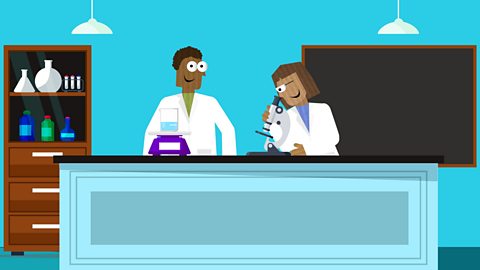What are Air and Water Resistance?
Have you ever wondered why things that fly through air and water:like planes and javelins;submarines and speedboats,are designed to be long and thin?
That’s because everything that moves through air or water must battle against it to get where it needs to go.
Swimmers and cyclists know this – that's why they wear smooth, tight clothing to help them slip through air and water faster.
Air is a gas made up of mainly nitrogen and oxygen.
Water is a liquid made up of billions of molecules, which makes it denser than air.
When the surface of an object tries to move through these gases and molecules,it causes them to push back in the opposite direction.
This slows the object down.
Resistance in air and water is a type of frictional force that is also known as drag.
Objects with a large surface area can produce more drag.
The faster an object travels, the more resistance it meets.
The greater the density of the air or water, the greater the friction.
That’s why aeroplanes fly at high altitudes, where the air is less dense.
And when they want to slow down, they release spoilers on the wings to increase surface area and increase drag.
Engineers work hard to streamline objects, like cars and boats, to reduce the impact of drag.
They make them smaller, lighter, and more aerodynamic and hydrodynamic:so, they can travel through air or water more efficiently.
Vehicles that are aerodynamic also use less fuel – which is better for the environment.
What other objects operate better when they’re aerodynamic?
There are many positive benefits to friction.
When you walk, the friction caused by the surface of the soles on your shoes meeting the ground stops you from sliding. Brakes on a bicycle help you to slow down by applying friction to the wheels.
Parachutes increase air resistance and enable sky divers to land safely.
And when you get cold, rubbing your hands together causes friction that warms them up.
But sometimes, a lack of friction can be fun – like when we go ice skating!
The blades on ice skates have very little surface area – so they produce less friction.
You can learn more about water resistance by playing a prediction game with friends.
Start by asking everyone to create a shape using modelling clay.
Now fill two clear containers with water and try to predict which shape will create the least drag and sink fastest.
On a piece of paper, write down the shape of the object, your predication and leave a space for the time.
Using a stopwatch, time the objects to see which shape travels fastest.
Adjust your shapes to make them more hydrodynamic and redo the experiment.
How did the changes you made reduce drag?
You can do a similar experiment using paper planes to test air resistance.
Video summary
This short animated film explores air and water resistance.
Air resistance is the force between the air and another object. Water resistance is the friction that slows down the movement of anything that is in water.
This film explains the difference between both water and air resistance and demonstrates examples of how resistance plays a part in our everyday life.
This short film is from the BBC Teach series Explain, Explore, Expand.
Teacher Notes
Explain
Air resistance, water resistance and friction are forces impacting on how we move in our daily lives.
Let's explore how they do this and how we use these forces to our advantage.
Key Facts
- Forces are pushes, pulls and twists in different directions.
- Forces are important because they determine how things interact.
- If balanced then an object that is still, remains still or if it's moving it moves at constant speed.
- If the forces are not balanced then an object speeds up, slows down, stops or changes direction.
- Engineers spend enormous amounts of time and money on understanding the impact of forces and trying to use aerodynamics, to reduce drag and improve fuel efficiency and create stability.
- Some forces act all the time everywhere in the universe like Gravity.
- Sometimes forces only act when there is contact between materials and movement, friction and resistance.
- Friction acts against the motion and acts in the opposite direction.
- Resistance in air and water is a type of frictional force. This force is known as drag.
- The greater the velocity of the object the greater the resistance(drag) becomes.
- The bigger your surface area facing the direction of travel the more resistance(drag) impacts on you.
- The greater the density (the number and mass of particles in a given area) of the air or water, the greater the resistive force becomes.
- Friction and drag are useful.
- Your rubber soles stop you from sliding along the floor.
- Brakes on a bike or car work by applying friction to the wheels to slow them down.
- Parachutes use drag to slow down fast-moving vehicles and people.
- This video references the positive benefits of friction. Further information can be found here: BBC Bitesize KS3 Friction
Explore
Where to pause?
- 00:43 - pause the video. Show students the presence of air by using a stiff piece of card as a fan to move through the air so they can feel its effect.
- 01:01 - pause the video. Show students the difference by using a stiff piece of card on its side so they can feel the difference in the amount of air it moves.
- 01:47 - pause the video. Discuss the shapes of transport vehicles and how the design has changed over the years.
- 02:12 - pause the video. Ask students to rub their hands together and discuss how the heat produced impacts braking systems.
Activities / Experiments
- Activity 1: Students work scientifically by: exploring falling paper cones or cup-cake cases and designing and making a variety of parachutes and carrying out fair tests to determine which designs are the most effective. They might explore resistance in water by making and testing boats of different shapes.
- Activity 2: Students can explore the effects of air resistance by observing how different objects such as parachutes and sycamore seeds fall. They should experience forces that make things begin to move, get faster or slow down.
- Activity 3: Students can explore the effects of friction on movement and find out how it slows or stops moving objects, for example, by observing the effects of a brake on a bicycle wheel.
Fun Facts
- The Burj Khalifa is one of the tallest buildings in the world. What key features help to keep it stable?
Expand
Discussion questions:
- What are the key features of a swimming cap?
- Imagine you could design shoes that had very little friction. What would be the advantages and disadvantages?
Other Videos:
Learning Objectives:
To Identify how the effects of air resistance, water resistance and friction, can affect motion.
National Curriculum objectives:
- England: To Identify the effects of air resistance, water resistance and friction, that act between moving surfaces.
- Scotland: To investigate how friction, including air resistance, affects motion, I can suggest ways to improve efficiency in moving objects.
- Northern Ireland: To know how forces can affect the movement and distance objects can travel, for example, the benefits of wearing a seatbelt or rockets.
- Wales 2020: To understand forces of different kinds. The new curriculum will be brought in 2022.
Sources:
How are shadows made? video
What are shadows? How are they made? What factors affect their size and shape? Let’s explore shadows in more detail – and learn how to turn your shadow into a clock!

Changing environments. video
This film explains how important environments are, what factors can change the conditions of different environments and how that can affect the things living in them.
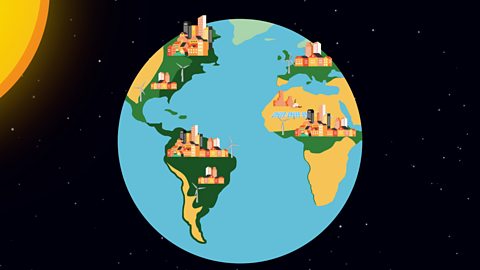
What is inheritance? video
This film explains how inheritance works in humans, animals and plants, and explores how humans use inheritance to their advantage, to produce animals and plants that are more productive.
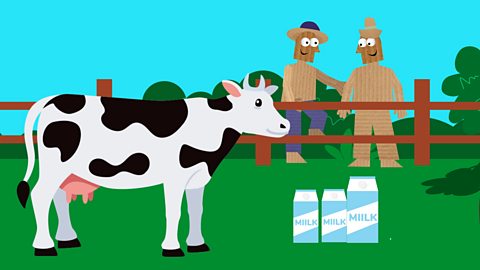
How do ecosystems work? video
This film explains the difference between biotic and abiotic, terrestrial, freshwater and ocean water ecosystems and looks at the effect of weather.
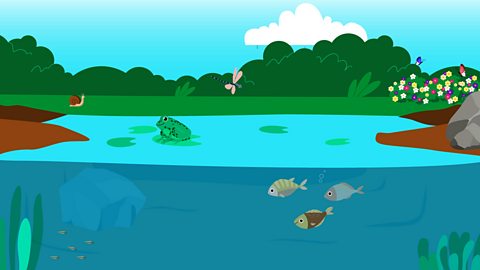
Day and night. video
This film explores the difference between day and night and demonstrates how the rotation of the earth's axis contributes to making seasons such as summer and winter.

Mechanisms. video
This film explains what a mechanisms are, using examples of where they are used and how they make our lives easier.
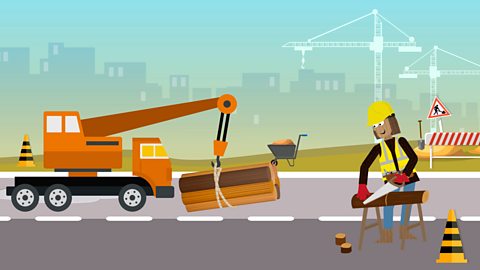
What should I do with my rubbish? video
This film explains the impact waste is having on our planet and how we can work to reduce our rubbish to make a difference.
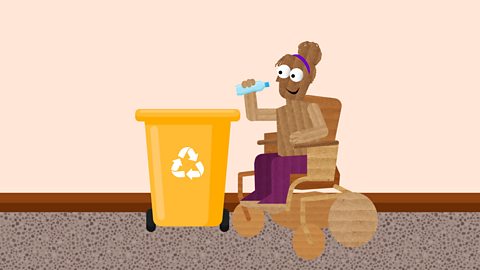
How to use scientific equipment. video
This film explains how we can use science equipment to develop our scientific abilities.
